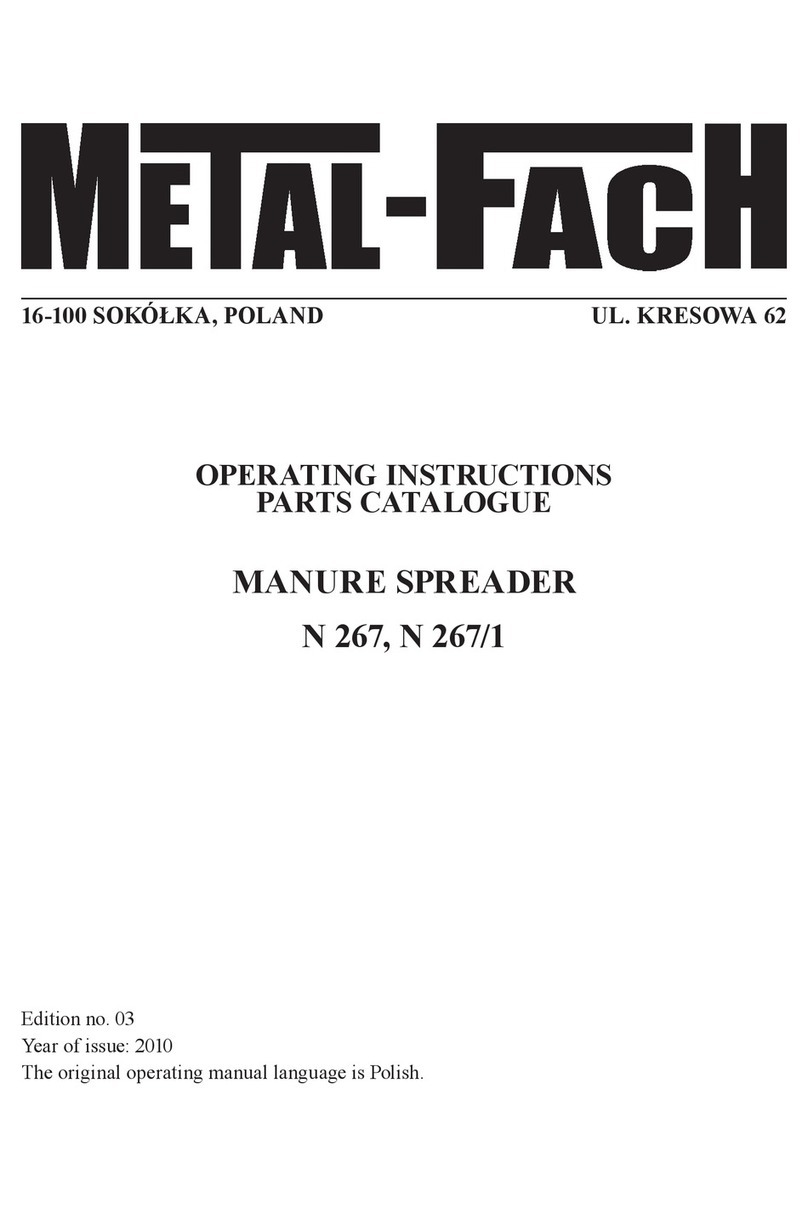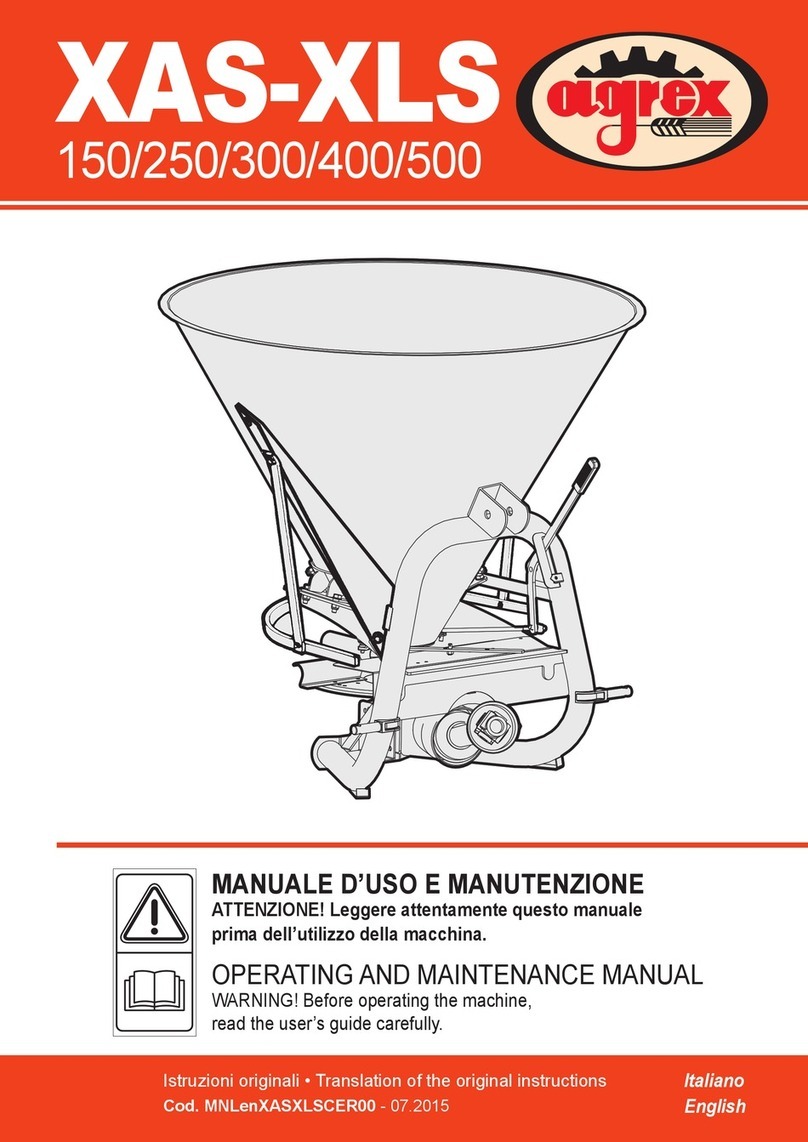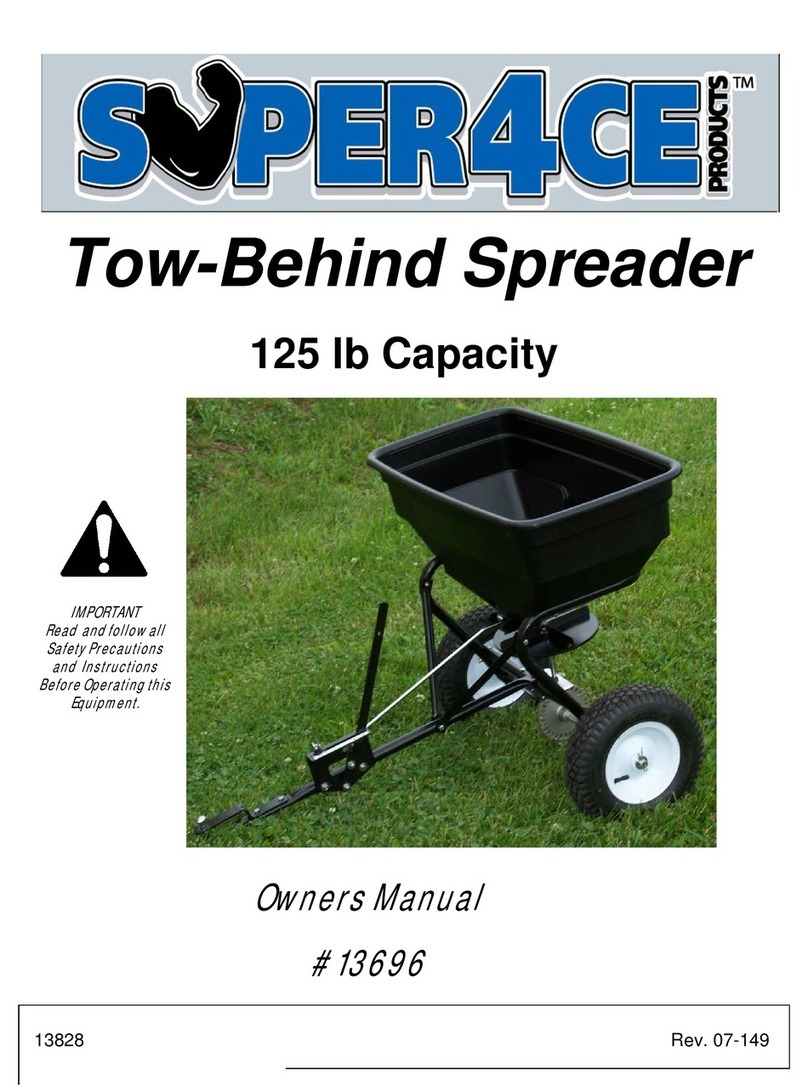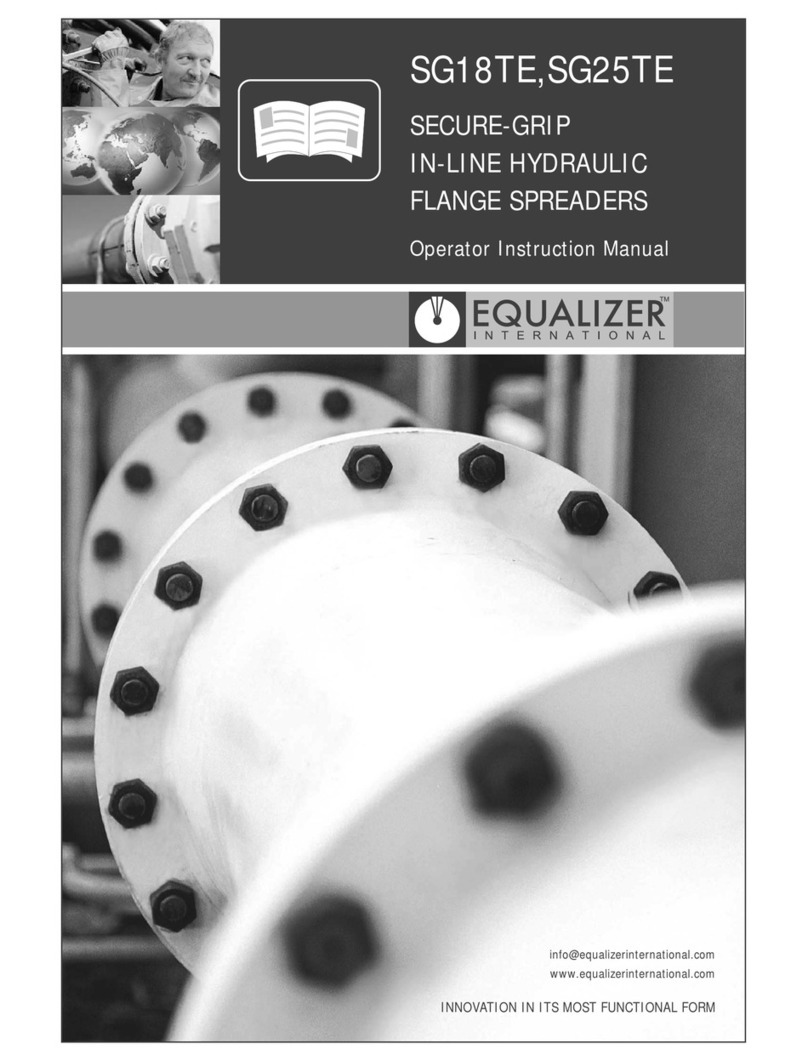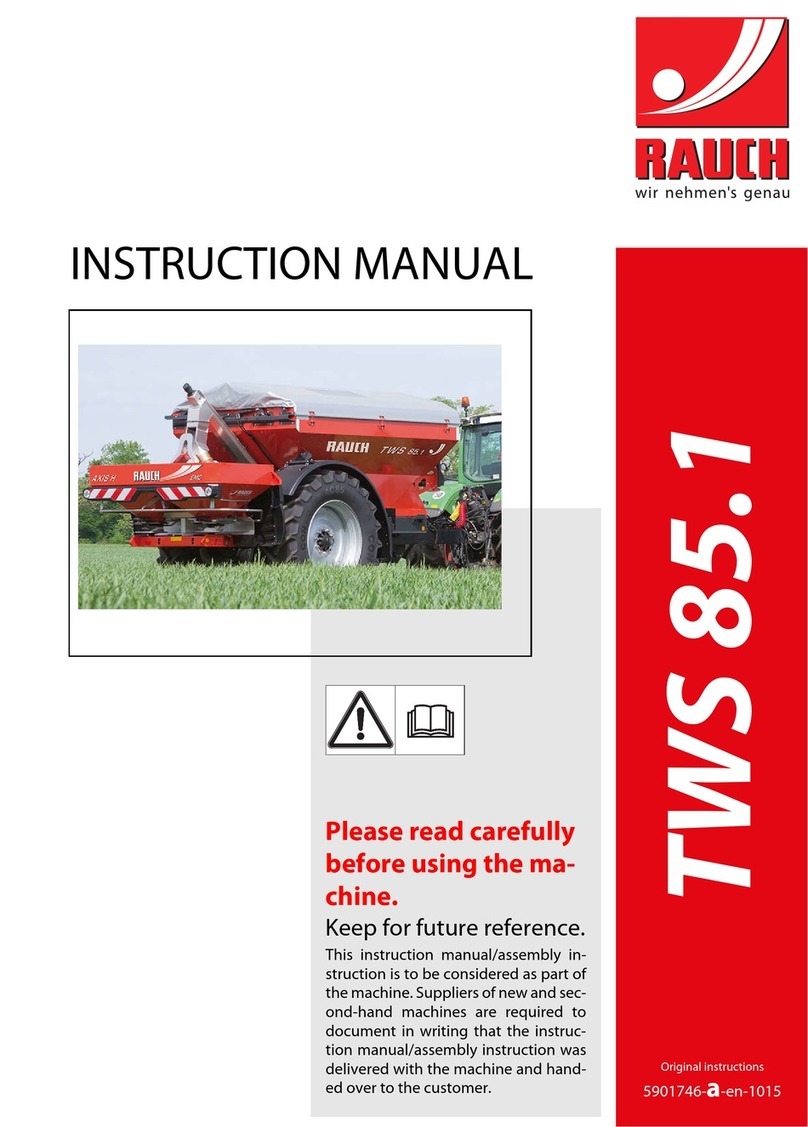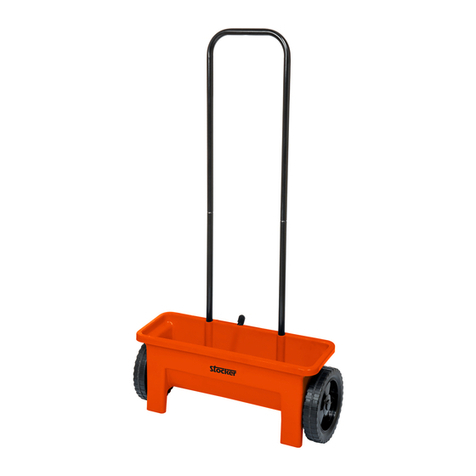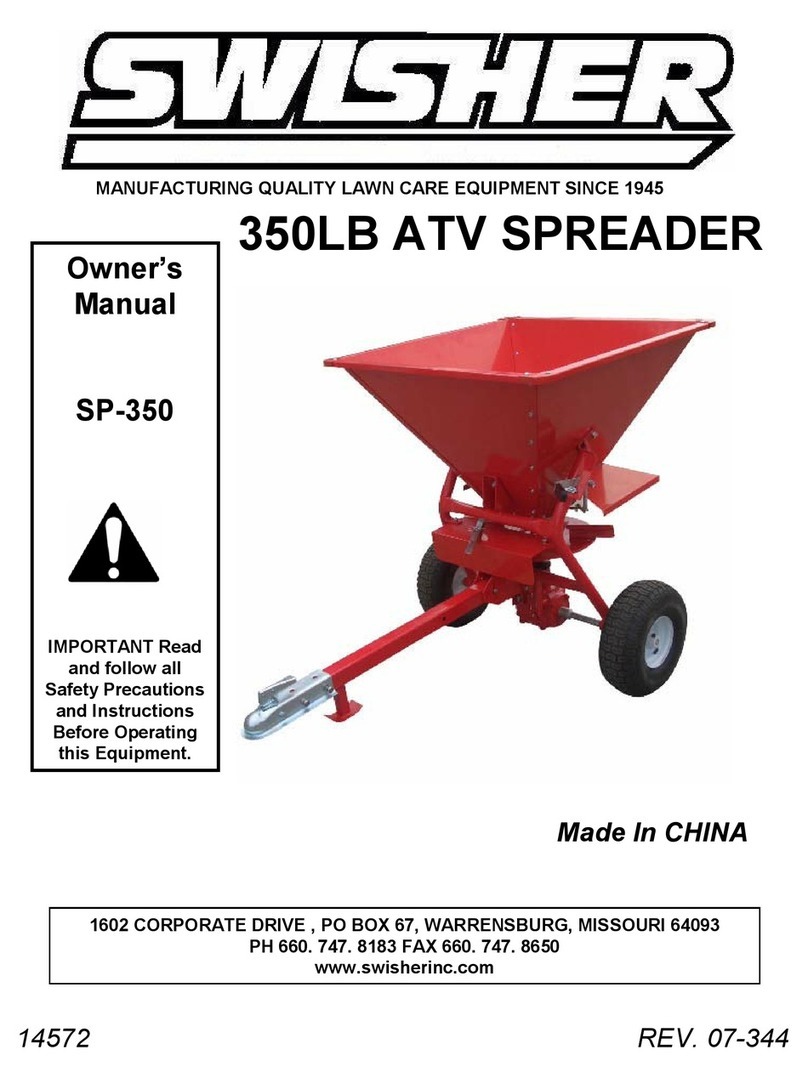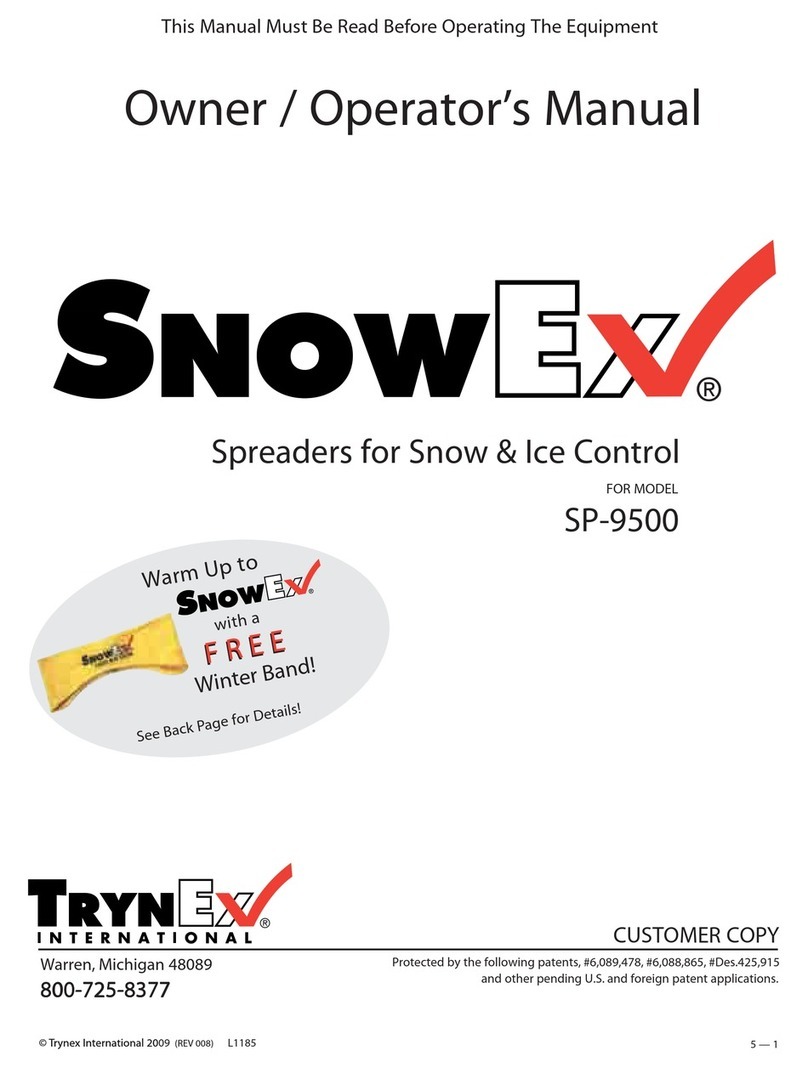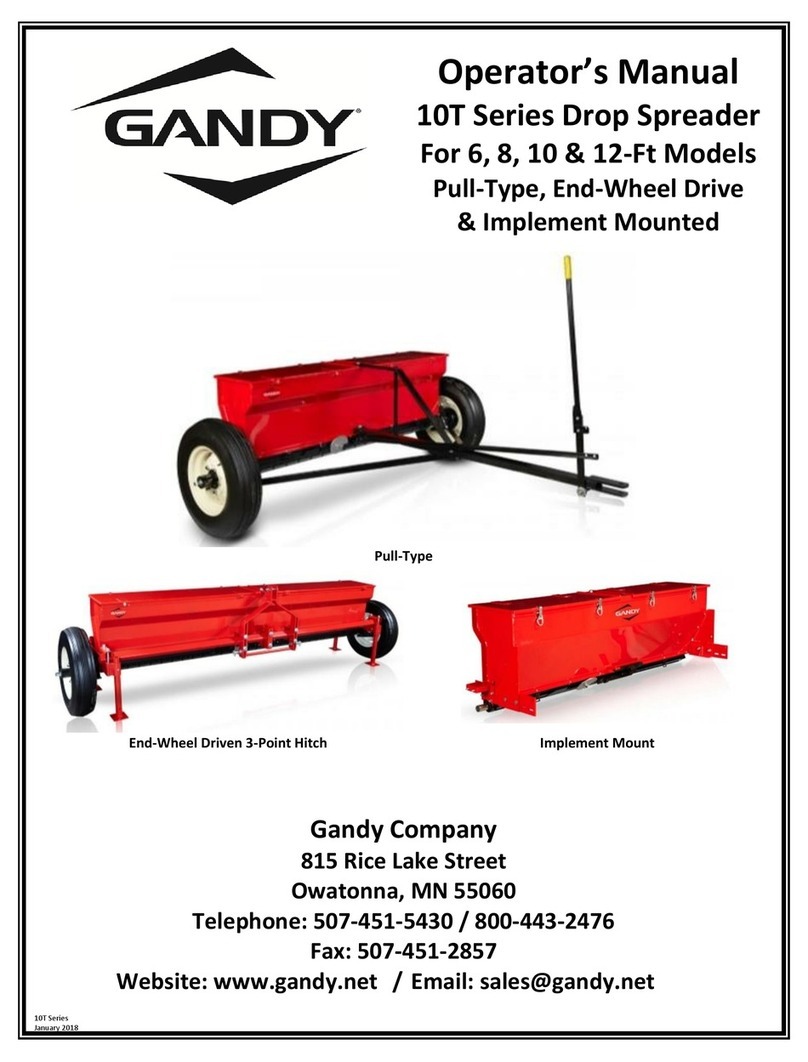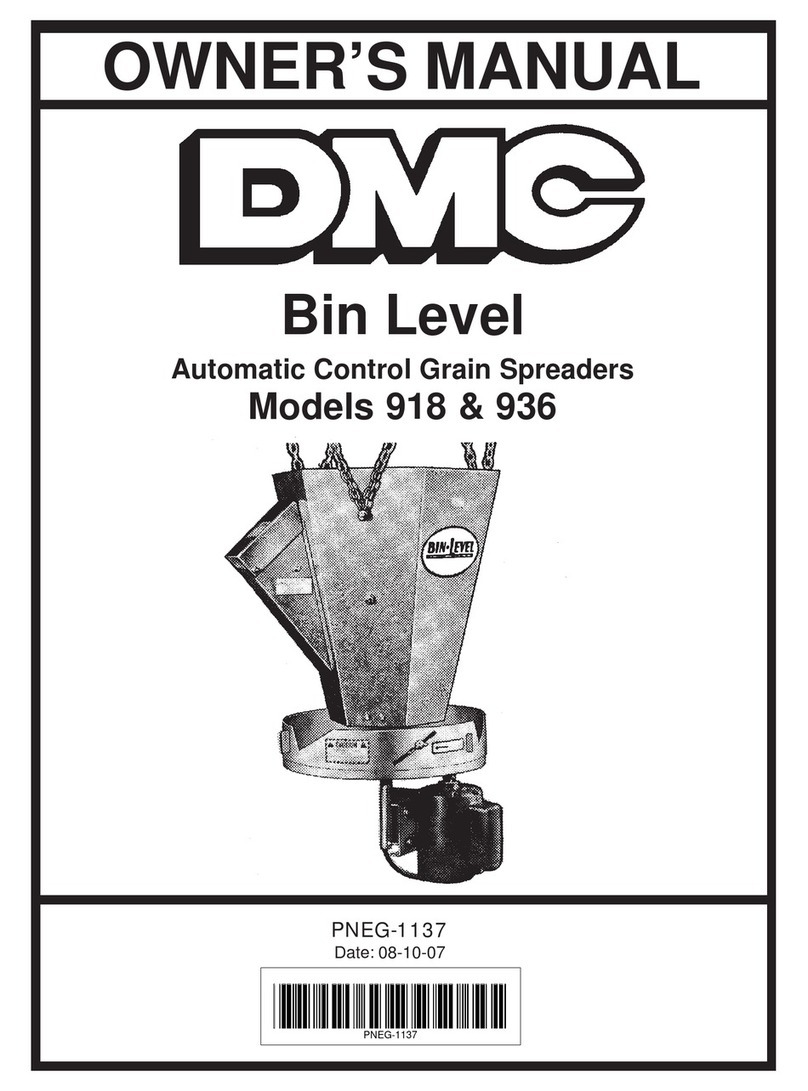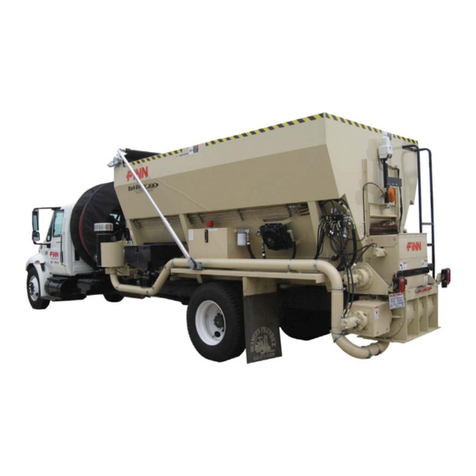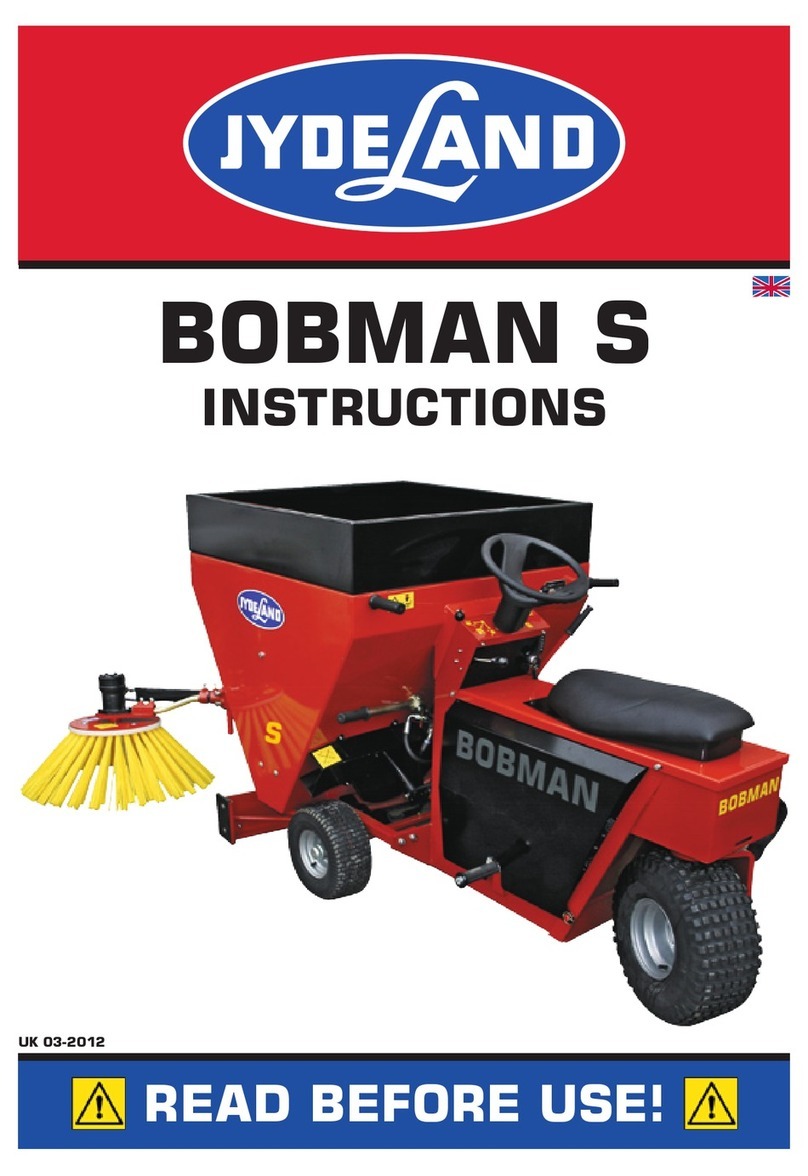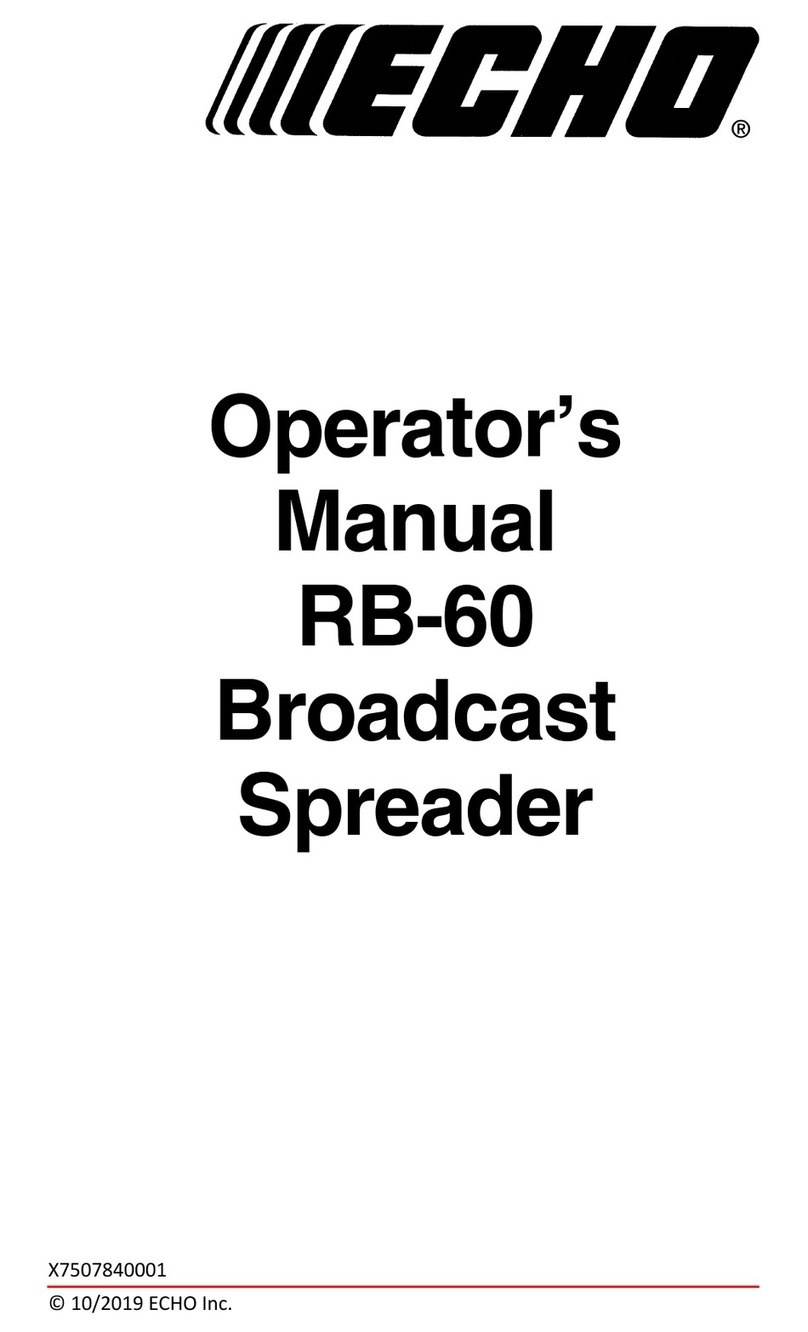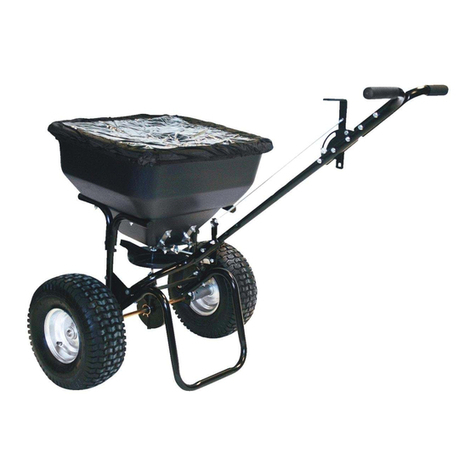Metal-Fach N280 User manual

16–100 SOKÓŁKA, POLAND UL. KRESOWA 62
OPERATING MANUAL
PARTS CATALOGUE
MANURE SPREADER
N280
N280/1
N280/2
Edition no. 01
Year of issue: 2012
The original operating manual language is Polish.

2
CE DECLARATION OF CONFORMITY
FOR THE MACHINE
„METAL-FACH” Sp. z o.o.
ul. Kresowa 62
16-100 SOKÓŁKA
which acts as the manufacturer
declares under sole responsibility that the following machine:
this declaration concerns, meets the following requirements:
- Directive 2006/42/EC OF THE EUROPEAN PARLIAMENT AND OF THE COUNCIL
dated 17 May 2006 on machines, and amending Directive 95/16/EC (Ocial Journal EU
L157 of 09/06/2006, p. 24) and the Resolution of the Minister of Economy of 21 October 2008
concerning general requirements for machinery (Journal of Laws No. 199 item 1228).
The following harmonised standards were used for compliance evaluation:
PN-EN 690+A1:2009 PN-EN ISO 4254-1: 2009 + AC:2010
PN-EN ISO 12100:2011 PN-EN ISO 13857:2010
- and the following standards: PN-ISO 3600:1998, PN-ISO 11684:1998; and the Resolution of
the Ministry of Infrastructure of 31 December 2002 on technical requirements for vehicles
and the scope of their necessary equipment (Journal of Laws issue 32 item 262 as amended).
Safe Use Test Report No.
Unit responsible for engineering documentation: Engineering and Design Department
This Declaration of Conformity becomes void and null if the machine design is changed
or modied in any manner without prior consent from the manufacturer.
Sokółka President of the Management Board
Jacek Marek Kucharewicz
Manure spreader
type/model N280-....................
year of manufacture: ........................................
serial number: ...................................................

3
CONTENTS:
1. INTRODUCTION .......................................................................................................................... 5
2. SAFETY INSTRUCTIONS ........................................................................................................... 6
2.1. RESIDUAL RISKS ................................................................................................................. 7
2.2. NOISE AND VIBRATION ..................................................................................................... 8
3. INFORMATION AND WARNING SIGNS .................................................................................. 8
4. INTENDED USE .......................................................................................................................... 14
5. OPERATION OF SPREADERS ................................................................................................. 14
5.1. COUpLINg ThE SpREADER wITh ThE TRACTOR.............................................................................. 14
5.1.1. AdApter drive ................................................................................................................ 16
5.1.2. Commissioning And running-in ....................................................................................... 17
5.2. ELECTRICAL SySTEm ................................................................................................................. 17
5.3. LOAD BODy gATE CONTROL ....................................................................................................... 18
5.4. FLOOR CONVEyOR..................................................................................................................... 18
5.4.1. HydrAuliC drive of tHe floor Conveyor ........................................................................ 18
5.4.2. mAnure dosing .............................................................................................................. 19
5.5. ADjUSTmENT OF CONVEyOR ChAIN TENSION ................................................................................ 20
5.6. SpREADINg ADApTER................................................................................................................. 21
5.7. BRAKES ADjUSTmENT ................................................................................................................ 22
5.7.1. pArking brAke Adjustment ............................................................................................. 22
5.7.2. serviCe brAke Adjustment .............................................................................................. 22
5.8. ADjUSTmENT OF ThE LAND whEELS CLEARANCE .......................................................................... 23
6. MAINTENANCE AND SERVICING ......................................................................................... 23
6.1. hyDRAULIC SySTEm SERVICINg .................................................................................................. 23
6.2. pNEUmATIC SySTEm SERVICINg................................................................................................... 24
6.3. pERIODIC mAINTENANCE ............................................................................................................ 24
6.4. LUBRICATION............................................................................................................................ 25
7. TECHNICAL CHARACTERISTICS ........................................................................................ 26
8. MAINTENANCE, CARE AND STORAGE .............................................................................. 27
9. DISMANTLING, DISPOSAL AND ENVIRONMENTAL PROTECTION ........................... 27
10. EQUIPMENT ................................................................................................................................ 28
11. USE ................................................................................................................................................. 29
12. DESIGN AND OPERATING PRINCIPLE OF THE SPREADER ......................................... 29

4
Nameplate

5
INFORMATION!
FAILURE TO FOLLOW THE RULES AND GUIDELINES INCLUDED IN THESE INSTRUCTIONS
MAY RESULT IN DEATH OR SEVERE BODY INJURY!
1. INTRODUCTION
The user of this product should read and understand these Operating Instructions in full, as well as follow all
the guidelines contained herein to ensure safe operation of this machine. The Instructions include the description
of the design and operating principle, technical characteristics and rules of intended use and servicing of the
machine. Exercise extreme caution when in doubt about any procedure or operation. Should you have any
questions, consult the authorised seller or the manufacturer.
Hazard warning sign
This sign denotes important information on the operating safety, which must be read in full and relayed to all
the service personnel if necessary. The information included in the Instructions contain the basic guidelines for
proper operation and servicing, as well as about the operating safety and health regulations.
Pursuant to the Resolution of the Ministry of Infrastructure of 31 December 2002 on technical requirements
for vehicles and the scope of their necessary equipment, we hereby notify that farming tractors and slow-moving
vehicles, as well as trailer units designed for coupling with these vehicles must feature an identication emblem.
The emblems are not required for a vehicle included in a string of vehicles which is not the last vehicle in the
string. We follow this requirement by equipping our vehicles with special mounting frames which are located
on the spreader adapter guard. Always mount the identication emblem for travelling on public roads. Place the
emblem in the tractor cab when the spreader is on duty.
The N280 spreader conforms to the trafc code regulations regarding the trafc of machines with the
maximum speed of 30 km/h on public roads. The machine also conforms to the safety requirements of the valid
regulations for the agricultural machines of this type.

6
2. SAFETY INSTRUCTIONS
Always turn off the tractor engine, remove the ignition key and engage the parking brake
before leaving the driver's seat.
Should any failure occur, always turn off the tractor engine.
Do not turn on the conveyor when the adapter is off. Prior to starting your work, rst lift the
body gate, engage the adapter, run it at the full PTO speed and then turn on the oor conveyor
drive.
Before attempting to work on any systems of the spreader connected to the tractor with the
drive-shaft, turn off the tractor engine and remove the ignition key. Decouple the drive-shaft
before servicing (maintenance, repairs) the machine. Engage the spreader parking brake and
chock the wheels.
Do not remain in the load body when the drive is on. Do not enter the spread zone when the
spreader is working. Ensure that no persons are in the spread zone.
Do not exceed the permissible payload and driving speed, otherwise the machine may be
damaged and the trafc safety may be compromised. Adapt the driving speed to the conditions
when working or travelling on a rough terrain. Follow the trafc code regulations when
travelling on public roads.
Do not use the oor conveyor to unload such materials as coal, wood, stone or construction
materials.
Do not use the machine on a terrain with an inclination exceeding 8.5o.
Note that during the unloading the machine will change its impact on the tractor and its
manoeuvring conditions.
Operation of the spreader without the system guards, riding on the spreader and its tow bar or
driving without the connected braking system is strictly forbidden. The driver's mesh guard
must be installed on the front end of the load body. The upper edge of the mesh guard must be
at least 2.6 m from the ground surface. The telescopic jointed shaft must always be equipped
with the full guard.
The mesh guard must be positioned to secure the adapter drums when towing the spreader on
public roads. Spreaders equipped with the body gate can only travel on public roads with the
gate closed.

7
The spreader can be operated only by adult personnel with a valid tractor driving licence. It is
strictly forbidden to operate the machine when under the inuence of alcohol or drugs.
Exercise due caution when performing any disassembly to prevent personal injury. If your
skin is cut, wash the wound thoroughly, disinfect with medical hydrogen peroxide solution
and seek medical attention. Any wound fouled with manure may result in Tetanus bacteria
infection.
2.1. RESIDUAL RISKS
The N280 spreader has been designed and produced in accordance to the state of technology and safety
requirements valid for its year of manufacture.
The manufacturer of this spreader has taken every effort in its design, production and labelling to eliminate
all hazards related to operation, servicing and maintenance. However, there are specic unavoidable risk present.
Residual risk results from incorrect or improper conduct of the operating personnel. The greatest hazards
occur during the following forbidden actions: The spreader is operated by minors or persons who are unfamiliar
with the operating instructions; The spreader is operated by persons under the inuence of alcohol or other
intoxicants; Performance of any work on the spreader systems, when the spreader is coupled with the tractor with
the running engine.
Attempting to work with the machine before inspecting the work site and environment;
Remaining on (aboard) the machine when it is working or in transit;
Use of telescopic jointed shafts without any guards;
Follow these guidelines and prohibitions:
- read and fully understand the operating instructions;
- secure the machine against access by unauthorised persons and children;
- cleaning, maintenance and repairs must be performed by adequately trained persons and with the PTO drive-
shaft decoupled;
- keep your hands out of hazardous spaces;
- do not use the machine when it is not t for duty and/or when the guards are missing;
- do not use the telescopic jointed shafts without any guards;
- no persons are allowed to remain near the machine when it is working;
- no persons are allowed to remain on the machine when it is working or in transit;
- do not use the machine without the connected and functioning braking and lighting systems;
only then can you eliminate the residual risks to people and the environment when using this spreader.
INFORMATION!
The residual risks are present when the aforementioned rules are not followed.

8
2.2. NOISE AND VIBRATION
The operator is inside the tractor cab when the machine is working.
The equivalent sound pressure emission level A (LpA) is 75.0 ± 1 dB.
The peak sound pressure value C (LCpeak) is 82.0 ± 1 dB.
Machine sound power – N/A.
(Measurements acc. to PN-EN ISO 4254-1:2006 Annex B section 2.6)
No vibration hazards occur when working with this machine.
The operator's workstation is located in the tractor cab, with shock absorption and an ergonomically
proled seat. The value of the vibration exposure of the operator does not exceed 0.5 m/s2.
3. INFORMATION AND WARNING SIGNS
Extremely hazardous areas are indicated with the yellow warning signs and warning labels placed on the
machine. During operation of this machine, exercise extreme caution when remaining in direct proximity of
these areas.
Check the serial number indicated in the Operating Instructions and the warranty card against the serial
number stamped on the nameplate and the chassis frame. The nameplate and the stamped serial number are
located on the chassis end sill, i.e. on the right side of the machine.
The warning stickers must always be legible. If the stickers become illegible, an assembly on
which they are located is replaced or the machine is repainted, the stickers must be purchased
at the retail outlets or ordered at your local dealer as spare parts and suitable replaced.
Warning! Read the Operating Instructions.
(1x)
Turn off the engine and remove the ignition key
before servicing or repairs.
(1x)
1 2

9
PTO rotational speed: 540 RPM.
(1x)
Do not remain between the machine and the tractor
when the engine is running.
(1x)
Do not approach the working machine. Maintain a
safe distance from the tow bar when it is being lifted
or lowered.
(1x)
Speed limit sign.
(1x)
300 kPa
Tyre pressure.
(2x)
Nameplate.
(1x)
Lug for lifting hooks.
(2x)
Coupling only with the tractor’s
top transport hitch
Warning label.
(1x)
Turn off the PTO drive at road turns.
Warning label.
(1x)
Do not enter the load body when
the drive is on.
Warning label.
(1x)
540 RPM
3 4
5 6
7 8
9 10
11 12

10
Keep a safe distance from power lines.
(1x)
Brake release sign.
(1x)
Load capacity 6 t
Information label
(1x)
Information label – manufacturer's logo.
(2x)
Information label – machine symbol.
(2x)
A4VS ADAPTER WEIGHT
470 kg
Description of the adapter weight.
(2x)
Keep a safe distance from the adapter. Do not put
your hands between the rotors.
(2x)
Warning sign.
(2x)
Ejected objects. Keep a safe distance from the
machine
(2x)
Lubrication points.
(4x)
13 14
15 16
17 18
19 20
21 22

11
Warning of being caught by the PTO drive-shaft.
(2x)
Do not ride on ladder steps or the tow bar. (1x)
Danger of hands crushing.
(2x)
Information on wheel tightening
(2x)
Danger of hand being caught by moving elements of
the feeder
(2x)
Tighten the wheel nuts after
couple of kilometres and then
repeat periodically
23 24
25 26
27

12

13
Fig. 1. Locations of the information and warning signs

14
4. INTENDED USE
The N280 spreaders are intended for spreading of manure, peat, compost, etc. and transportation of crops
within farms and on public roads. The machines are self-dumping and coupled with farming tractors only by the
lower hitch.
Spreaders are equipped with gates and facilitate transport of loose bulk loads by preventing its spillage from
the load body.
The spreaders can only be operated and serviced by adults who have read and understood these Operating
Instructions, specically the information in section "Safety Instructions".
Servicing and operating this product against the Operating Instructions releases the manufacturer from any
liability resulting from improper use and makes the warranty null and void.
The manufacturer forbids any unauthorized modication of the spreader design. Any modications of the
design release the manufacturer from any effects of such changes and may void the warranty.
In the case of any doubts regarding the use of the spreader, consult your supplier or the manufacturer's service
department.
5. OPERATION OF SPREADERS
5.1. Coupling the spreader with the tractor
The spreader is coupled with the tractor in the following way:
- couple the hitch lug with the tractor coupler;
- t the telescopic jointed shaft and use the chains to secure the shaft guard from turning during operation;
- connect the spreader electrical system to the tractor electrical system and secure the plug from decoupling;
- connect the spreader's drive hydraulic system to the terminal of the tractor hydraulic system by twisting the
quick-release coupling nut clockwise home;
- connect the pneumatic system of the service brake;
- connect the body gate hydraulic system;
- check that the connections between the spreader and the tractor hitch, electrical connections, service brake
connections and the connections between various systems and drives;
- if all systems are functional, release the parking brake and lift the support.
THE FOLLOWING IS STRICTLY FORBIDDEN:
- coupling the spreader with the tractor by using any other coupling than the lower hitch. The machine must
have the parking brake engaged when it is being coupled;
- pressurized hydraulic systems of the tractor when coupling the trailer – all control valves must be set to
neutral. When the quick-release coupling nut is tightened, the coupling is opened and high oil pressure may
result in a leak. Tighten the nuts until resistance is felt to ensure that the couplings are fully sealed.

15
Disconnecting the spreader:
Before disconnecting the spreader from the tractor, rst engage the machine parking brake and lower the
support wheel – see g. 2 item 1.
The support wheel stabilizes the spreader when it is loaded or not.
Fig. 2 N280 spreader's support wheel.
Do not disassemble the support or rest the machine on makeshift supports.
Do not leave agricultural equipment on slopes or any other terrain inclinations without
securing it against accidental rolling.

16
5.1.1. Adapter drive
The adapter drums are driven by the telescopic jointed shaft, which couples the tractor PTO with the two-
sectional drive shaft and the telescopic jointed shaft located before the adapter. Spreaders with the A4VS adapter
(with four vertical worm drums) have an articulated shaft with a slip clutch.
The telescopic jointed shafts used in the spreader:
Machine
Ty pe Shaft designation Rated torque Rated length Transferred
output
Overload
clutches
Nm mm kW Nm
N280
N280/1
N280/2
540
900
1745
920
30
50
1600
1500
The shaft must bear the "CE" marking. Use only the shafts that are equipped with complete
guards.
Do not use the telescopic jointed shafts with damaged guards.
When the machine is properly operated, the overload clutch should not engage. If the clutch engages, the
machine is overloaded. If the material is not ejected during operation, the shear pin overload clutch is engaged.
Remove the cause of overload (e.g. a cord wound on the drums, objects jammed between the drums, etc.). When
the drive system is overloaded, the pin in the coupling shaft is sheared.
Before attempting to clear the jam, turn off the tractor engine and remove the ignition key.
When the overload cause has been cleared, prior to turning the machine on and directly before
turning on the drive, reverse the conveyor shift direction for a short moment. (The conveyor
shift direction is changed by changing the feed direction with the directional control valve of
the tractor.)

17
5.1.2. Commissioning and running-in
Do the following before commissioning the spreader:
- read and understand the operating instructions in full;
- assemble the machine in accordance with the intended work;
- check the tightness of all threaded connections and the tension of chains;
- supply lubricants at the lubrication points;
- check the transmission oil level and top up if required – use HIPOL–15 oil;
- park the spreader and run it in initially without the load.
The initial running-in should last approximately 15 minutes at decreased rotational speed of the tractor drive.
During this procedure ensure that all systems work smoothly and without jamming and excessive noise. When
the initial running-in is nished, make sure that the fastening bolts did not become loose and check the tension
of chains.
Lubricate at all lubrication points twice a day for the rst 20 operating hours. Replace the transmission oil
afterwards and check the tightening of bolts and chain tension. Readjust if necessary.
The manure can be mechanically loaded on the spreader. In order to fully use the spreader load capacity
when working with long-straw manure, it is allowed to ll the load body up to 10 cm above the upper edge. Do
not load the long-straw manure directly on the adapter drums – this may damage the drive. The load must not
hang over the body sides. When the work is nished or if needed, remove the manure which may accumulate on
the rear beam in the area of socket wheels and on the spreader drums, as well as on the drive shafts. Excessive
accumulation of dirt can overload the tractor and elongate the conveyor chains. In order to achieve the best
spreading parameters (i.e. width and uniformity), keep the PTO speed on the tractor between 920 and 1000 rpm.
Warning:
Clean the spreader only when the drive is decoupled and the tractor is stopped. Exercise extreme
caution when cleaning with the raised gate. Decouple the telescopic jointed shaft from the tractor.
Warning:
When the spreader works on the eld, the material in the load body moves towards its rear end. This
slowly decreases the pressure on the tractor hitch and lowers the wheel grip of the rear tractor wheels.
This may reduce the tractor's pull force on difcult terrain (i.e. hilly or damp ground). Due to this fact it
is advised perform the nal phase of unloading the load body of the spreader when moving down a slope
or on a at (level) terrain.
5.2. Electrical system
The spreader is equipped with a 12 V electrical system supplied by the tractor. Before entering a public road,
always make sure that the lighting system is functional. The electrical system powers the two front sidelamps, the
lamp clusters and the clearance lamps.

18
5.3. Load body gate control
The load body gate is lifted and lowered hydraulically by the secondary hydraulic system of the tractor.
5.4. Floor conveyor
5.4.1. Hydraulic drive of the oor conveyor
The oor conveyor system of the spreader is hydraulically driven by the transmission gearbox powered by
the hydraulic motor, which in turn is driven by the pressurised hydraulic oil from the tractor's hydraulic system.
The shift speed of the oor conveyor (i.e. the manure spreading output) is controlled and adjustable by setting
the adjustment screw (2) of the ow controller (1) installed in the right section of the spreader front panel. Turning
the adjustment screw clockwise increases the conveyor shift speed, while turning it counter-clockwise decreases
the shift speed. When the spreader is unloaded and the material mass decreases, the conveyor shift speed slightly
increases at the same time.
Fig. 3. Flow controller
The only shift speed which is pre-set is the reverse shift speed of the conveyor. The conveyor shift direction
is switched by changing the feed direction on the tractor (with the directional control valve of the tractor).

19
5.4.2. Manure dosing
The oor conveyor output for the manure with a specic gravity of 950 kg/m3:
Setting
no.
Conveyor output
kg/s
10.0
20.0
36.4
414.3
525.7
638.4
750.1
864.7
976.8
10 99.5
The manure dosing (at the specic gravity of 950 kg/m3), depending on the oor conveyor shift speed and the
actual service speed is presented in the following table:
Setting no. Conveyor
output
[kg/s]
Spreader service speed [km/h]
4 5 6 7 8 9 10
Manure dose [T/ha]
36.4 7.2 5.8 4.8 4.1 3.6 3.2 2.9
414.3 16.1 12.9 10.7 9.2 8.0 7.2 6.5
525.7 29.0 23.2 19.3 16.5 14.5 12.9 11.6
638.4 43.2 34.6 28.8 24.7 21.6 19.2 17.3
750.1 56.4 45.1 37.6 32.2 28.2 25.1 22.6
864.7 72.8 58.2 48.5 41.6 36.4 32.3 29.1
976.8 86.4 69.2 57.6 49.4 43.2 38.4 34.6
10 99.5 112.0 89.6 74.6 64.0 56.0 49.8 44.8
The manure dosing (at the specic gravity of 950 kg/m3), depending on the oor conveyor shift speed and the
actual service speed is presented in the following table:
Setting no.
Conveyor
output
[kg/s]
Spreader service speed [km/h]
4 5 6 7 8 9 10
Manure dose [T/ha]
34.1 4.6 3.7 3.1 2.6 2.3 2.0 1.8
49.1 10.2 8.2 6.8 5.9 5.1 4.6 4.1
516.3 18.3 14.6 12.2 10.4 9.2 8.2 7.4
624.2 27.2 21.8 18.2 15.6 13.7 12.2 10.9
731.6 35.6 28.4 23.7 20.3 17.8 15.8 14.2
840.8 45.9 36.8 30.6 26.3 23.0 20.4 18.4
948.5 54.6 43.7 36.4 31.2 27.3 24.3 21.8
10 62.9 70.7 56.6 47.2 40.4 35.3 31.4 28.3

20
Note: Take extra caution when performing the adjustment. Turn off the tractor engine, remove
the ignition key and engage the parking brake of the tractor.
5.5. Adjustment of conveyor chain tension
The conveyor chains are adjusted by the stretcher screws (see g. 4 item 1) located on the stringers of the
spreader's top frame. The adjustment includes rotating screw (1) so as to obtain the correct chains tension. But
if tension of one of the chains is different, correct it using coupler (3). After the screw (1) adjustment range is
reached, adjust the support for wedges (2) and (4) using screws shown in g. (5). To check the chains tension,
raise the chain in the location in the middle of the length of the body. The distance of the chain from the oor
should be 1–6 cm when lifted. If the chain is lifted above the maximum stretcher adjustment value, replace the
chain with a new one.
Fig. 4. Tensioning the conveyor chains.
To correct the setting of tensioners after the adjustment range of screw (1) g. 4 is reached, shift the wedge
supporting blocks using screws (1) g. 5. Counter the screw with nut (2) g. 5.
This manual suits for next models
2
Table of contents
Other Metal-Fach Spreader manuals
